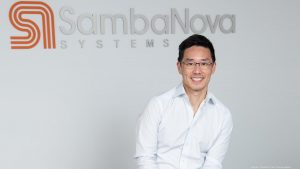Palo Alto-based company, SambaNova provides a SaaS-based platform designed to launch enterprise-level AI initiatives, augment organizations’ AI capabilities, and accelerate the work of existing data centers. Its offerings enable organizations to focus on their business objectives instead of infrastructure.
Led by Rodrigo Liang, Co-founder and CEO, SambaNova's technology is used by Argonne National Laboratory, the Department of Energy’s National Nuclear Security Administration (NNSA), Lawrence Livermore National Laboratory (LLNL), and Los Alamos National Laboratory (LANL).
SambaNova has its own AI chip called Cardinal but does not sell it directly. Instead, it packages Cardinal up as part of its DataFlow server architecture, and then bundles that together into an 8U system called DataScale. This, the company says, allows for the overall system to avoid memory issues that hold back conventional AI systems. DataScale can then be bought or installed on-premises and paid for as-a-service.
Now, SambaNova has announced it has raised $676 million, valuing the company at more than $5 billion post-money. SoftBank Vision Fund 2 led the round. Others involved include Temasek Holdings, Singapore Sovereign Investment Fund GIC, BlackRock, Intel Capital, GV (formerly Google Ventures), Walden International, and WRVI Capital.
SambaNova says it plans to expand its customer base — particularly in the datacenter market — as it becomes one of the most capitalized AI companies in the world with over $1 billion raised.
SambaNova is a well-established competitor in a market that’s anticipated to reach $91.1 billion by 2025. The company said it will use the latest injection of capital to increase AI performance, to challenge legacy competitors, and to make AI more accessible. Its workforce has grown from about 150 when it raised a $250 million Series C round in February 2020 to more than 300 today. It plans to employ more than 500 new employees by the end of 2021.
























